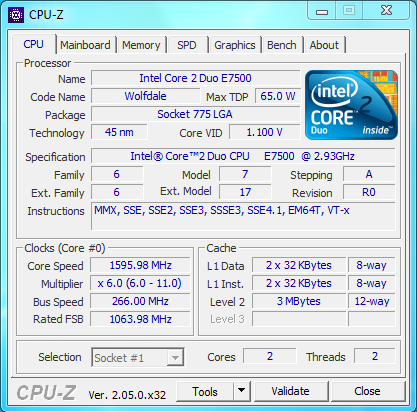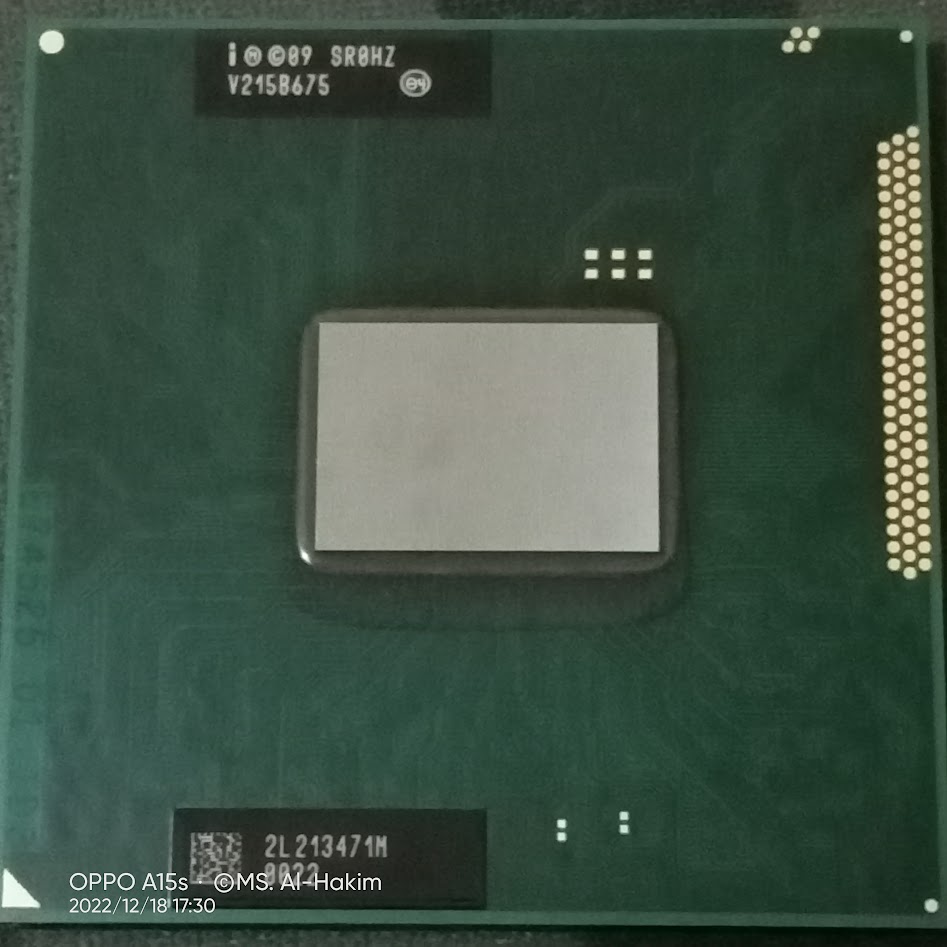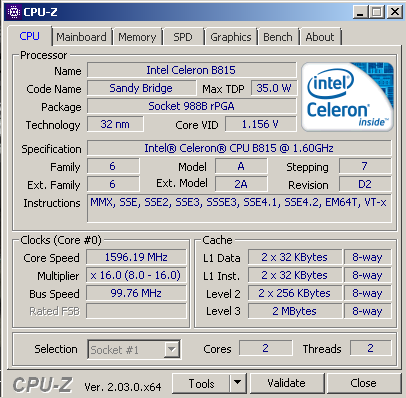Comparing: Intel Celeron B815 vs Intel Core 2 Duo E7500
In this comparison, we analyze two Processors: Intel Celeron B815 and Intel Core 2 Duo E7500, using synthetic benchmark tests to evaluate their overall performance. This side-by-side comparison helps users understand which hardware delivers better value, speed, and efficiency based on standardized testing. Whether you're building a new system or upgrading an existing one, this benchmark-driven evaluation offers valuable insights to guide your decision.

Intel Core 2 Duo E7500
| Type: | Processors |
|---|---|
| Brand: | Intel |
| Model: | Core 2 Duo E7500 |
Specification Comparison Table
This specification comparison presents technical details of several devices or components to help you understand the key differences between each option. Use this table as a reference to determine which device best suits your needs.
| Specification | Intel Celeron B815 | Intel Core 2 Duo E7500 |
|---|---|---|
| Architecture | x86 | x86 |
| Technology | 32 nm | 45 nm |
| Clock | 1.6 GHz - - | 2.93 GHz - - |
| Core/Thread | 2 / 2 | 2 / 2 |
| Segmen | Mobile | Desktop |
Submission Comparison Table
This submission comparison table displays the number and details of benchmark data submissions from various devices or components. This information helps you understand the performance based on the benchmarks that have been tested, as well as providing an overview of the consistency and popularity of the available benchmark results.
| No. | Benchmark Software | Intel Celeron B815 | Intel Core 2 Duo E7500 |
|---|---|---|---|
| 1 | PiFast |
47sec, 490ms |
34sec, 90ms |
| 2 | SuperPi - 1M |
24sec, 976ms |
18sec, 470ms |
| 3 | wPrime - 32M |
41sec, 44ms |
27sec, 191ms |
Submission Comparison Chart
This chart visualizes the benchmark scores comparison between two hardware devices based on submitted data.
Media Gallery
A collection of photos of tested hardware. These images can help you identify the physical form, model, and variant of the hardware in question. These photos are from our own documentation, and if they are not available we may not be able to document them.
About Hardware Intel Celeron B815
The Intel Celeron B815, released in 2012, is an entry-level mobile processor based on the Sandy Bridge architecture. Designed for budget laptops, it features 2 cores and 2 threads with a fixed clock speed of 1.6 GHz. The processor does not support Turbo Boost or Hyper-Threading, limiting its multitasking capabilities.
Manufactured using 32nm process technology, the Celeron B815 has a TDP of 35W, which is relatively high for a low-end mobile CPU. This higher thermal output typically results in shorter battery life and more heat generation compared to modern low-power processors.
For graphics, the processor is equipped with Intel HD Graphics 2000, which runs at a base frequency of 650 MHz and can boost up to 1.0 GHz. While not suitable for gaming, this integrated GPU handles basic visual tasks like 720p video playback, simple animations, and light graphical workloads adequately.
In everyday usage, the Celeron B815 performs best with lightweight applications such as web browsing, word processing, and playing standard-definition videos. However, it struggles with modern operating systems, multitasking, and heavier workloads due to its limited core/thread count and lack of advanced CPU features.
Hardware Detail:
Device: SAMSUNG 300E4Z
RAM: 4GB DDR3 Dual Channel
OS: Windows 7
Sunday, 27 November 2022 02:25:40 | Update: 1 month ago
About Hardware Intel Core 2 Duo E7500
The Intel Core 2 Duo E7500 is a desktop processor released in 2009, based on the Wolfdale architecture, which is part of Intel’s Core 2 Duo family. It features 2 cores and 2 threads, running at a clock speed of 2.93 GHz, and operates with a 1066 MHz Front Side Bus (FSB).
Manufactured using 45nm process technology, the E7500 has a TDP of 65W, which was considered energy-efficient for its time. However, this processor does not support Hyper-Threading or Turbo Boost, meaning its performance is limited to strictly single-threaded and basic dual-threaded applications.
In terms of modern computing standards, the Core 2 Duo E7500 is outdated and performs well below current entry-level processors. Despite this, it can still be useful in legacy systems for light workloads such as basic web browsing, office documents, and 480p–720p video playback, especially when paired with a lightweight operating system.
Thursday, 09 March 2023 02:31:57 | Update: 1 month ago



